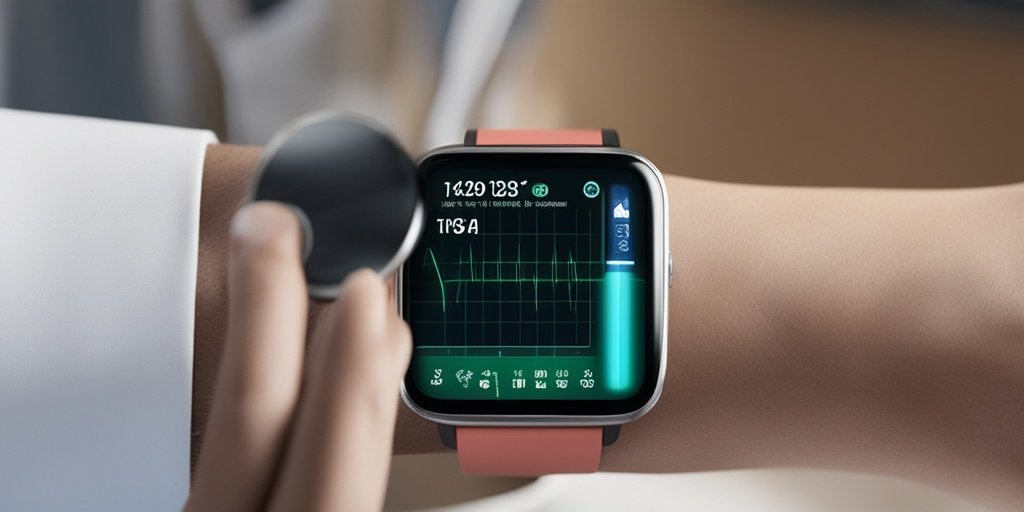⚡ Quick Summary
This study introduces a novel ResNet-LSTM neural network architecture for predicting arterial blood pressure (BP) using non-invasive physiological signals. The model achieved a mean absolute error (MAE) of 6.2 mmHg, demonstrating its potential for real-time health monitoring in managing hypertension.
🔍 Key Details
- 📊 Dataset: Utilized physiological signals including ECG and PPG
- 🧩 Features used: Electrocardiogram (ECG) and photoplethysmogram (PPG)
- ⚙️ Technology: ResNet-LSTM neural network architecture
- 🏆 Performance: MAE of 6.2 mmHg, RMSE of 8.9 mmHg
- 💻 Computational cost: ~4,375 FLOPs
🔑 Key Takeaways
- 📊 Deep learning can enhance BP prediction accuracy in smart wearables.
- 💡 The ResNet-LSTM model combines feature extraction and sequential data processing.
- 🏆 Superior performance was observed with PPG data compared to ECG.
- 🔍 Comprehensive error analysis validated the model’s robustness.
- 🌍 Potential for continuous BP monitoring in remote healthcare settings.
- 🔮 Future work will focus on refining anomaly detection models.
- 📈 Improved patient outcomes are anticipated with real-time monitoring.

📚 Background
The increasing demand for real-time healthcare solutions has highlighted the necessity for advanced technologies capable of providing timely health monitoring. Hypertension, a major risk factor for cardiovascular diseases, necessitates accurate and non-invasive methods for predicting arterial blood pressure. This study aims to bridge the gap in current healthcare systems, particularly in underserved areas, by employing deep learning techniques in Smart Health Monitoring (SHM).
🗒️ Study
The research introduced a novel ResNet-LSTM architecture to predict BP from physiological signals, specifically focusing on ECG and PPG data. The study involved comprehensive error analysis and validation through Leave-One-Out (LOO) cross-validation, ensuring the model’s reliability across different datasets.
📈 Results
The ResNet-LSTM model demonstrated remarkable performance, particularly with PPG data, achieving a mean absolute error (MAE) of 6.2 mmHg and a root mean square error (RMSE) of 8.9 mmHg for BP prediction. Although the model incurs a higher computational cost of approximately 4,375 FLOPs, its accuracy and generalization capabilities affirm its robustness for continuous BP monitoring.
🌍 Impact and Implications
The findings of this study underscore the potential of integrating advanced deep learning models like ResNet-LSTM into SHM systems for accurate and non-invasive BP prediction. This approach not only enhances the monitoring capabilities of wearable devices but also emphasizes the critical need for effective anomaly detection in continuous health monitoring. The implications for patient care are significant, particularly in remote areas where access to healthcare is limited.
🔮 Conclusion
This research highlights the transformative potential of deep learning in the realm of hypertension management. By leveraging the ResNet-LSTM architecture, healthcare professionals can achieve more accurate and timely BP predictions, paving the way for improved patient outcomes. The future of health monitoring looks promising, and further research in this area is encouraged to refine these technologies and enhance their applicability in real-world settings.
💬 Your comments
What are your thoughts on the integration of deep learning in health monitoring? We invite you to share your insights and engage in a discussion! 💬 Leave your comments below or connect with us on social media:
Detecting anomalies in smart wearables for hypertension: a deep learning mechanism.
Abstract
INTRODUCTION: The growing demand for real-time, affordable, and accessible healthcare has underscored the need for advanced technologies that can provide timely health monitoring. One such area is predicting arterial blood pressure (BP) using non-invasive methods, which is crucial for managing cardiovascular diseases. This research aims to address the limitations of current healthcare systems, particularly in remote areas, by leveraging deep learning techniques in Smart Health Monitoring (SHM).
METHODS: This paper introduces a novel neural network architecture, ResNet-LSTM, to predict BP from physiological signals such as electrocardiogram (ECG) and photoplethysmogram (PPG). The combination of ResNet’s feature extraction capabilities and LSTM’s sequential data processing offers improved prediction accuracy. Comprehensive error analysis was conducted, and the model was validated using Leave-One-Out (LOO) cross-validation and an additional dataset.
RESULTS: The ResNet-LSTM model showed superior performance, particularly with PPG data, achieving a mean absolute error (MAE) of 6.2 mmHg and a root mean square error (RMSE) of 8.9 mmHg for BP prediction. Despite the higher computational cost (~4,375 FLOPs), the improved accuracy and generalization across datasets demonstrate the model’s robustness and suitability for continuous BP monitoring.
DISCUSSION: The results confirm the potential of integrating ResNet-LSTM into SHM for accurate and non-invasive BP prediction. This approach also highlights the need for accurate anomaly detection in continuous monitoring systems, especially for wearable devices. Future work will focus on enhancing cloud-based infrastructures for real-time analysis and refining anomaly detection models to improve patient outcomes.
Author: [‘Kishor Kumar Reddy C’, ‘Kaza VS’, ‘Madana Mohana R’, ‘Alhameed M’, ‘Jeribi F’, ‘Alam S’, ‘Shuaib M’]
Journal: Front Public Health
Citation: Kishor Kumar Reddy C, et al. Detecting anomalies in smart wearables for hypertension: a deep learning mechanism. Detecting anomalies in smart wearables for hypertension: a deep learning mechanism. 2024; 12:1426168. doi: 10.3389/fpubh.2024.1426168